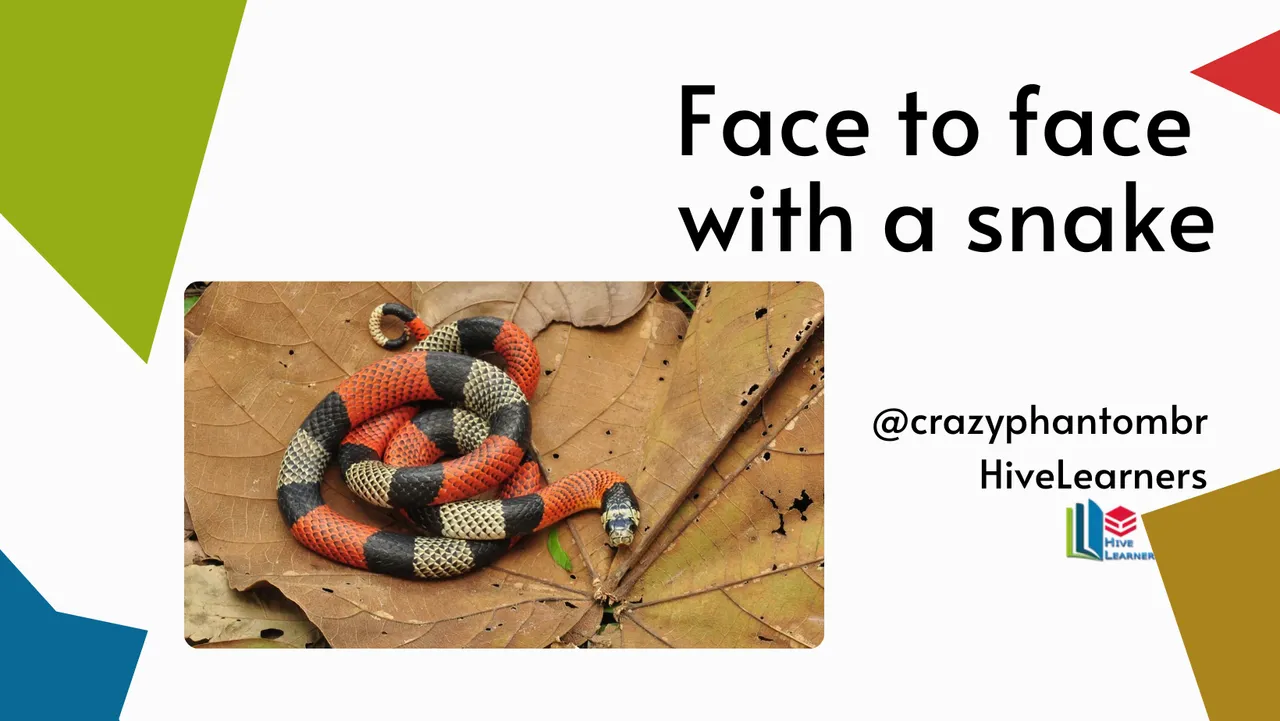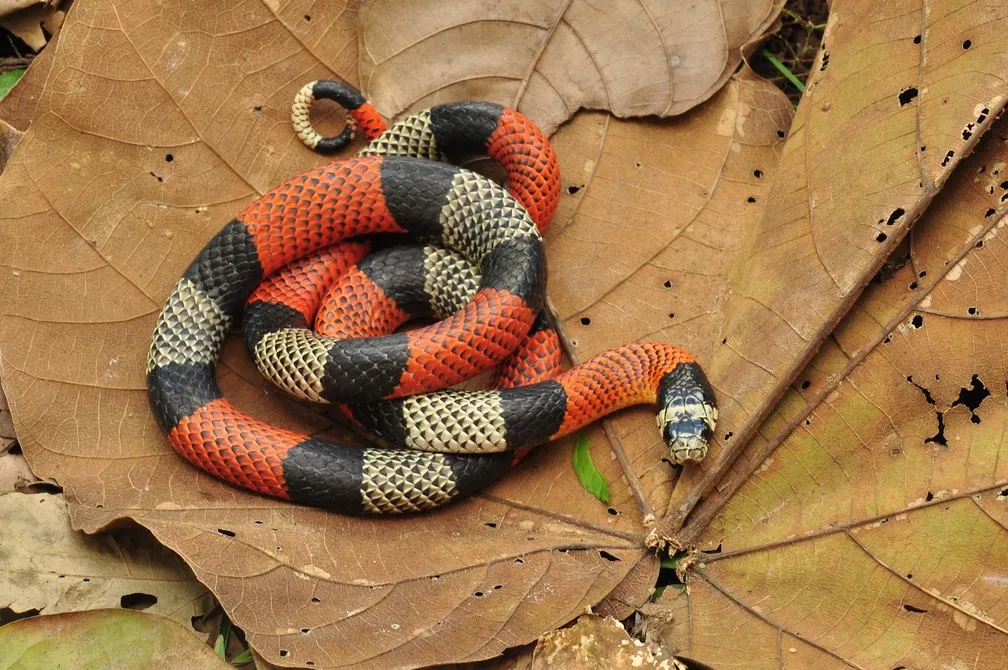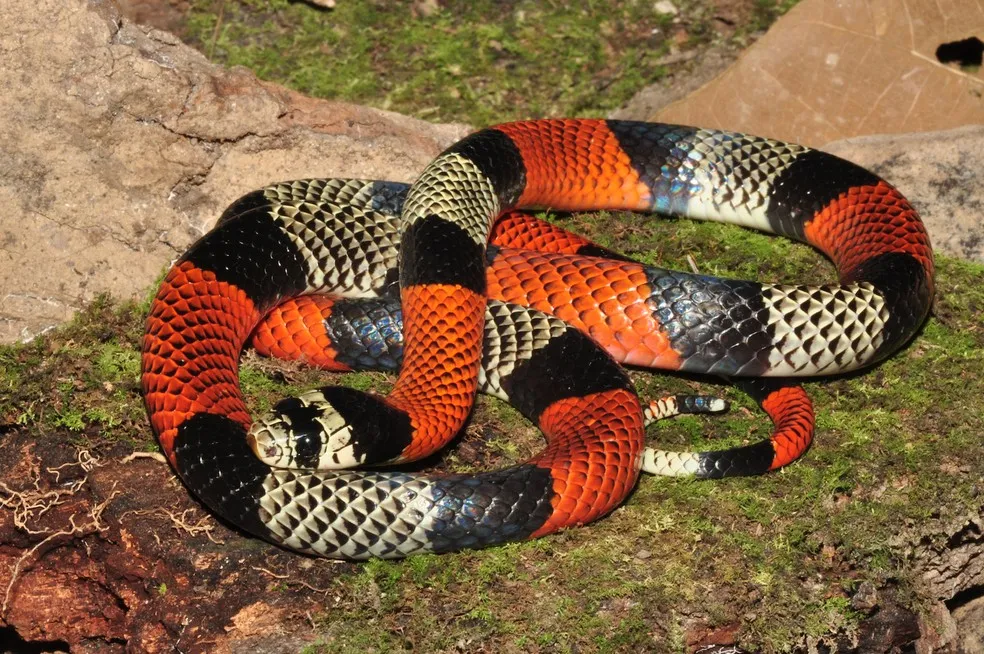
EN by Google / PT-BR below
Image Source
To my always friends in the HiveLearners community, my best regards! I'm slowly returning to actively participate, I hope the content meets the community's wishes!
I've been through some delicate moments when it comes to animals! This can be partly explained by the fact that I live in a less urban region, that is, in the countryside. It's not quite in the field where the plants are grown, but the city is small and surrounded by forest.
Wild animals
I've had some problems with wild animals. The most common is the appearance of snakes. The problem with snakes is that you need to know how to identify which ones are really dangerous. Here we have many episodes of snakes entering the human circulation area, so I will take the opportunity to comment a little on this.
 Coral Snake / Micrurus lemniscatus
Coral Snake / Micrurus lemniscatus
Image Source
The coral snake is very dangerous. Easily identifiable by their colors, a sequence of white, red and black rings, lives hidden in pits, holes, holes or under logs.
We don't usually see these animals walking around, on the contrary! When we are moving around in dark or covered places, we may be surprised by one of these snakes inhabiting the same place!
In this case, be aware that the coral snake is venomous, and presents serious risks when it attacks humans. Its venom is neurotoxic, and has an effect that affects the neuromuscular system and causes a type of paralysis, mainly respiratory failure.
Surely his attack could be fatal!
 False Coral Snake (Erythrolamprus aesculapii)
False Coral Snake (Erythrolamprus aesculapii)
Image Source
However, there are species that during their evolutionary process benefited from being extremely similar to coral snakes. This is the case of False Coral, like the one in the image above. If anything, it's poisonous! Can you differentiate the two species?
We generally try to identify the triangular-shaped head when looking from above. This is an indication of venomous snakes. Furthermore, we can try to identify eyes with a vertical slit, which should also scare us! And finally, we have a sign n pattern of elongated and pointed scales, which are rough to the touch. I don't suggest you touch the snake to find out if it is poisonous!
Conclusion
Are you wondering how I got rid of this snake when it appeared in my company's courtyard?! Be aware that you can't joke about the possibility of having a real Coral Snake in front of you, so as we had doubts about the species, we thought it best to call the firefighters.
The work to remove the wild animal was done with great professionalism and without harming the snake, which was taken and released in an appropriate location, back into the wild.

EN by Google / PT-BR abaixo
Image Source
Aos meu sempre amigos da comunidade HiveLearners, minhas melhores saudações! Estou retornado aos poucos para participar ativamente, espero que o conteúdo atenda ao desejo da comunidade!
Já passei por alguns momentos delicados quando o assunto é animais! Isso pode ser explicado em partes por eu morar em uma região menos urbana, ou seja, no interior. Não chega a ser no campo onde são cultivadas as plantas, mas a cidade é pequena e rodeada por mata.
Animais silvestres
Já tive alguns problemas com animais silvestres. O mais comum é a aparição de cobras. O problema das cobras é que você precisa saber identificar quais são realmente perigosas. Aqui temos muitos episódios de cobras entrando na área de circulação de humanos, então vou aproveitar para comentar um pouco sobre isso.
 Cobra Coral / Micrurus lemniscatus
Cobra Coral / Micrurus lemniscatus
Image Source
A cobra-coral é muito perigosa. Facilmente identificáveis pelas cores, uma sequência de anéis brancos, vermelhos e pretos, vive escondida em fossas, tocas, buracos ou embaixo de troncos.
Geralmente não vemos esses animais passeando por ai, pelo contrário! Quando estamos mexendo em locais escuros ou cobertos, podemos nos surpreender com uma dessas serpentes habitando o mesmo local!
Neste caso fique sabendo que a cobra coral é peçonhenta, e apresenta sérios riscos quando ataca humanos. Seu veneno é neurotóxica, e tem um efeito que afeta o sistema neuromuscular e causa uma espécie de paralisia, principalmente uma insuficiência respiratória.
Certamente seu ataque pode ser fatal!
 Falsa Cobra-Coral (Erythrolamprus aesculapii)
Falsa Cobra-Coral (Erythrolamprus aesculapii)
Image Source
Contudo, existem espécies que durante seu processo evolutivo foram beneficiadas por serem extremamente parecidas com as cobras-corais. É o caso da Falsa Coral, como esta da imagem acima. Ela se quer é venenosa! Você consegue diferenciar as duas espécies?
Geralmente procuramos identificar a cabeça em formato triangular, quando olhando de cima. Esse é um indicativo de cobras venenosas. Além disso podemos tentar identificar os olhos com uma fenda vertical, que também deve nos deixar apavorado! E por fim, temos um sinal n padrão de escamas alongadas e pontiagudas, sendo ásperas ao toque. Não sugiro que você toque na cobra para saber se é venenosa!
Conclusão
Você de estar se perguntando como me livrei dessa cobra quando ela apareceu no pátio da minha empresa?! Pois saiba que não se pode brincar com a possibilidade de ter uma Cobra-Coral verdadeira na sua frente, então como tínhamos dúvidas sobre a espécie, achamos por bem chamar os bombeiros.
O trabalho de remoção do animal silvestre foi feito com muito profissionalismo e sem ferir a cobra, que foi levada e solta em um local apropriado, de volta na natureza.


crazyphantombr apoia a comunidade FreeCompliments! Acesse pelo InLeo!

crazyphantombr apoia a comunidade brasileira! Acesse pelo InLeo!
